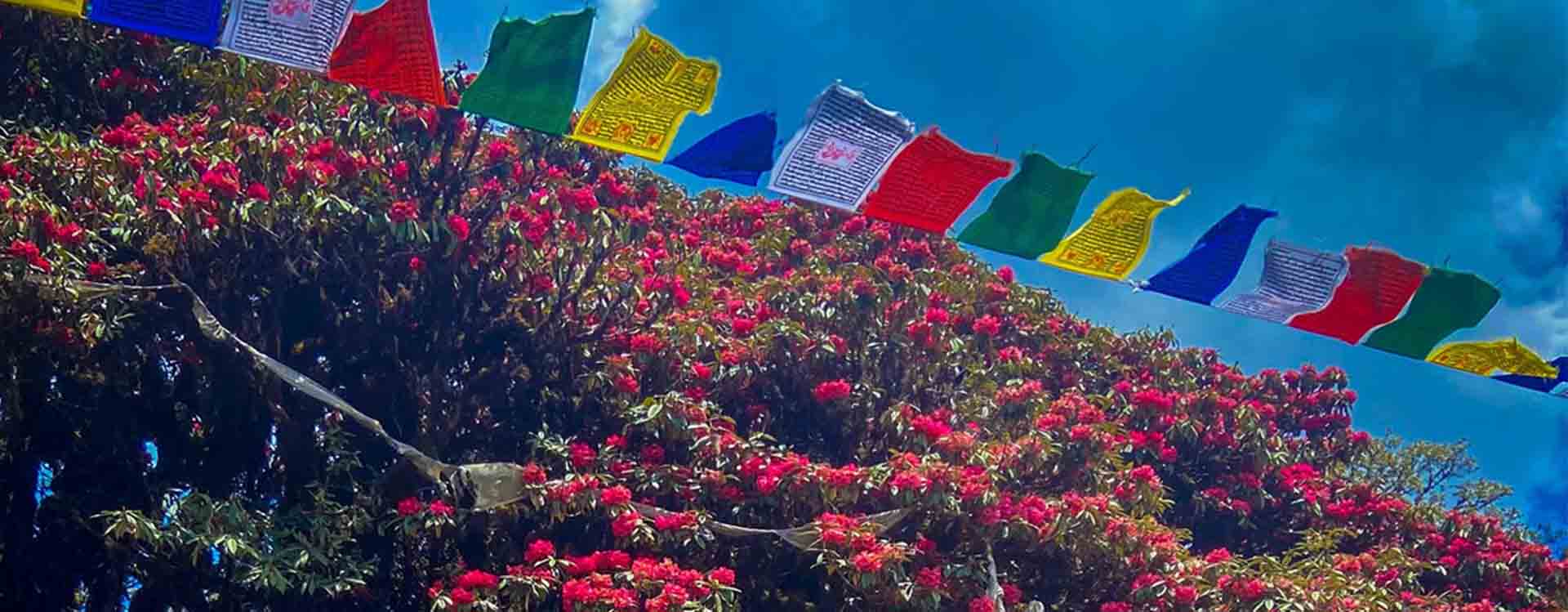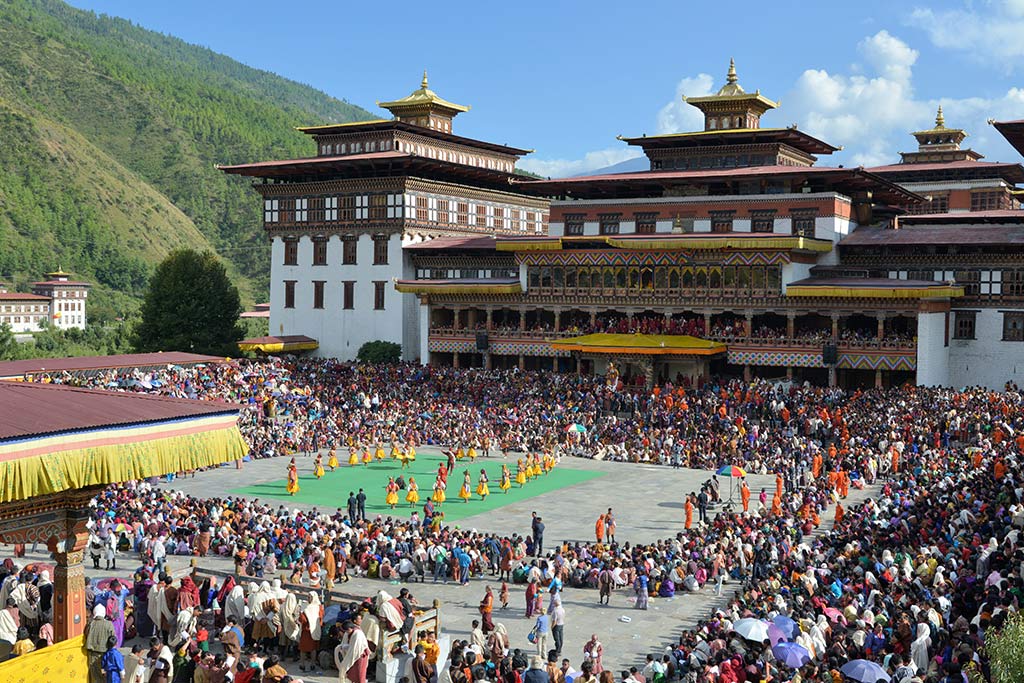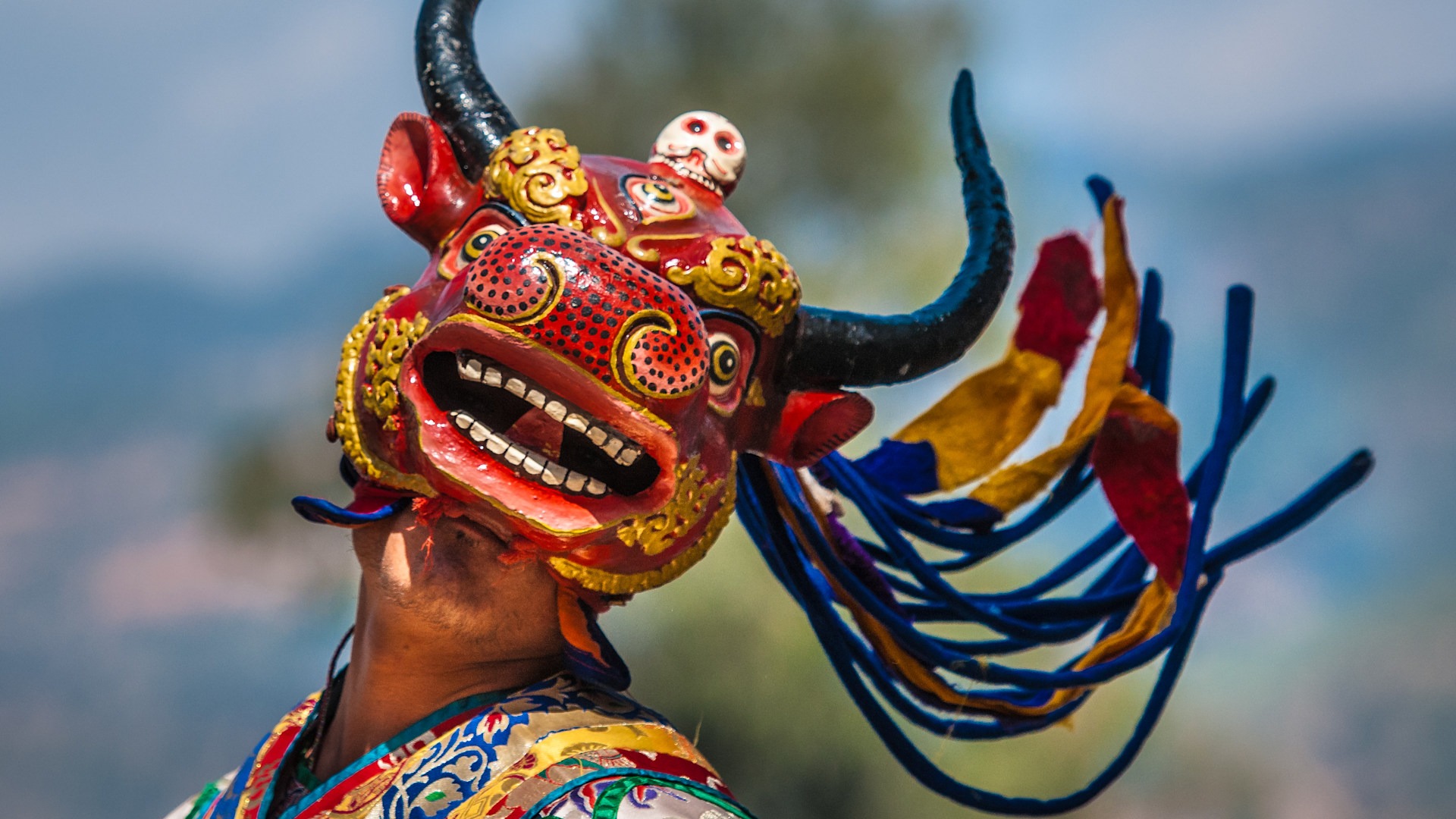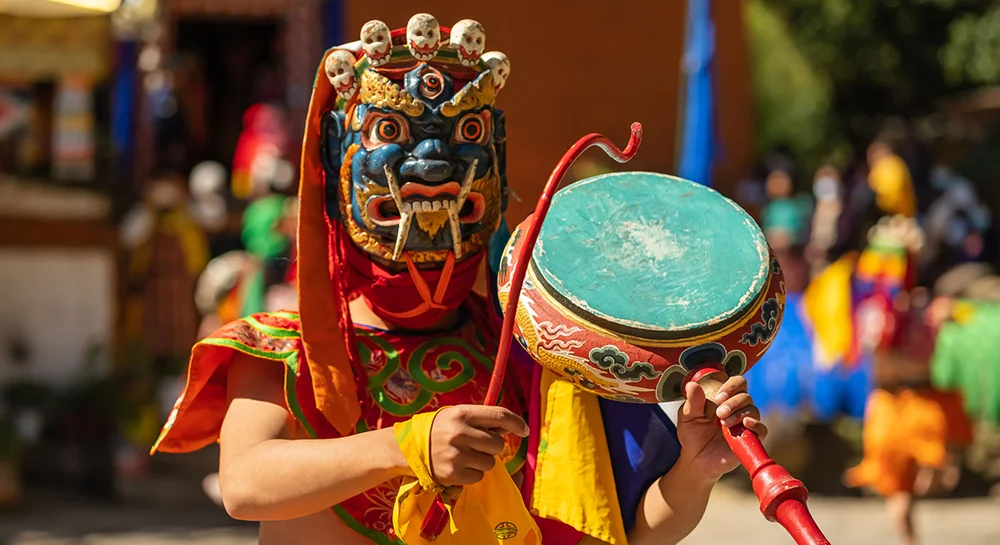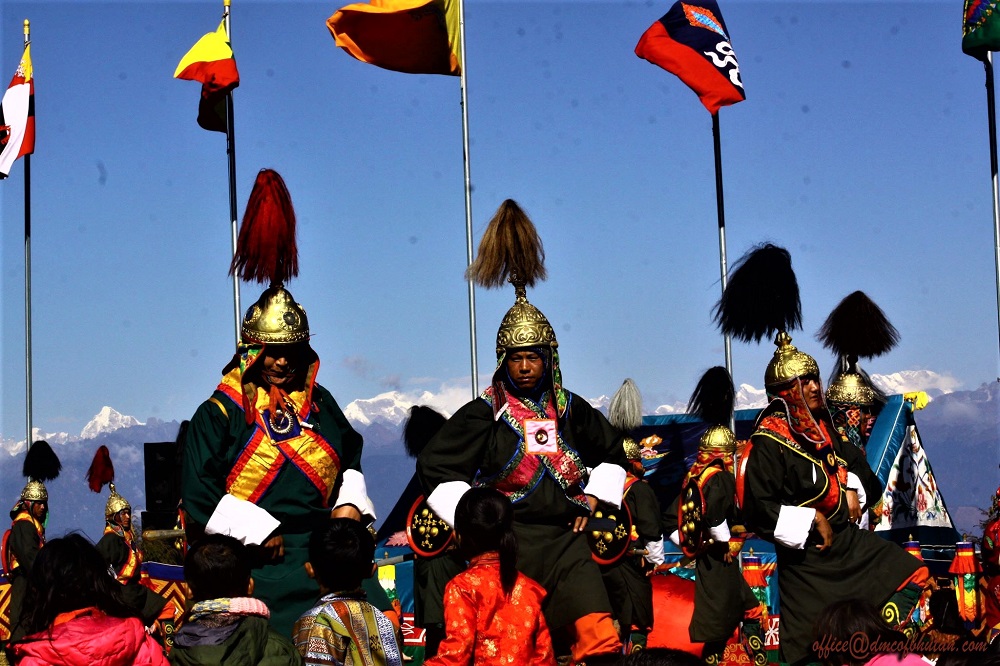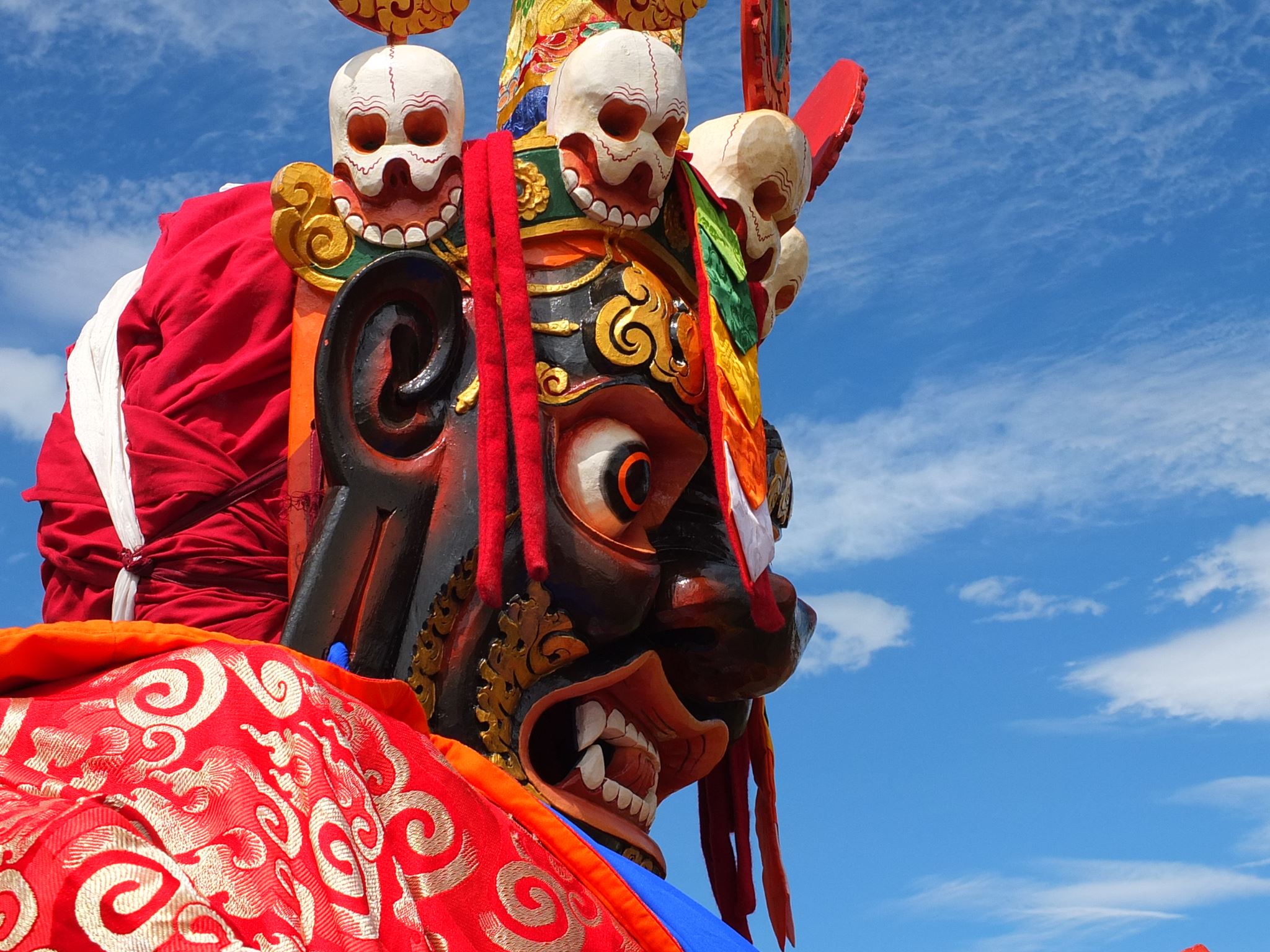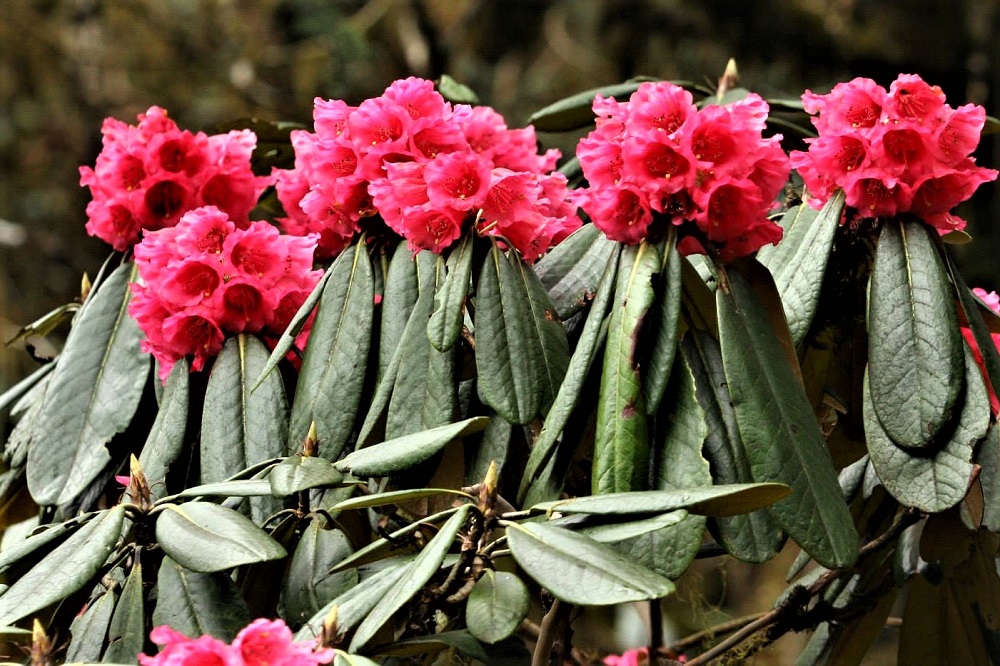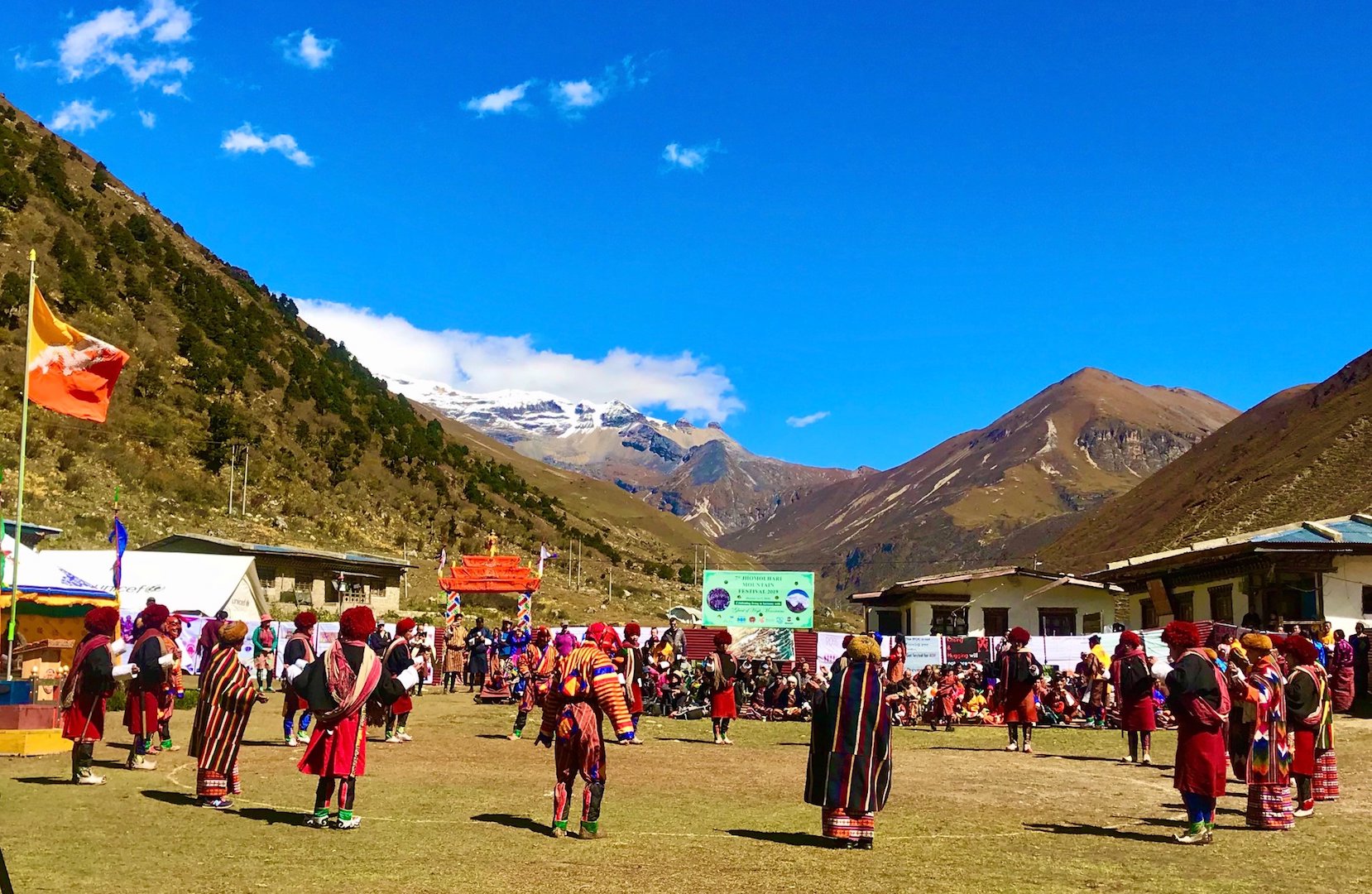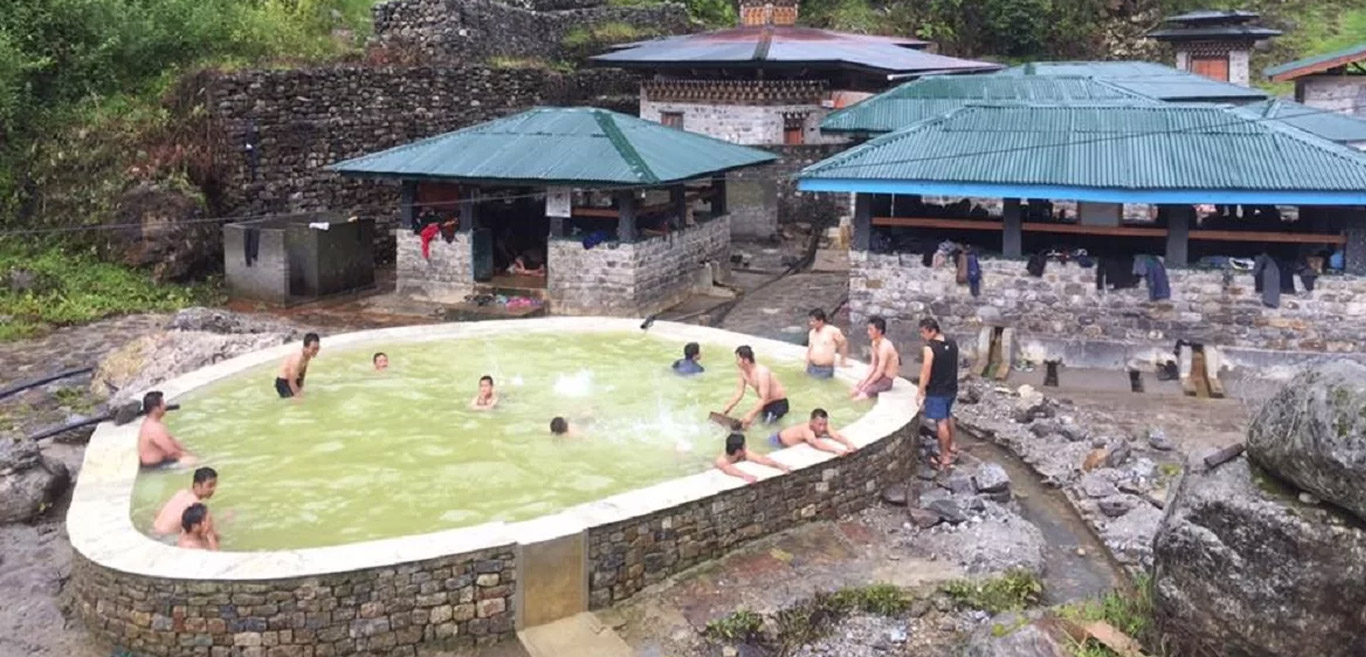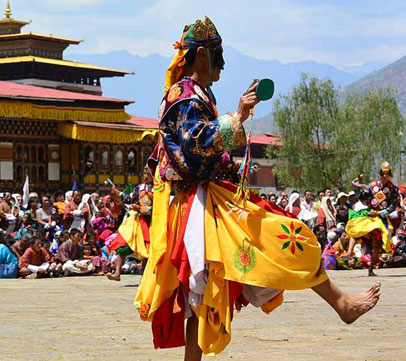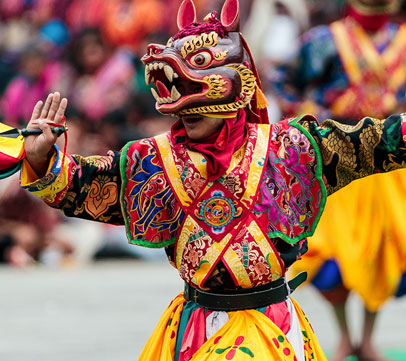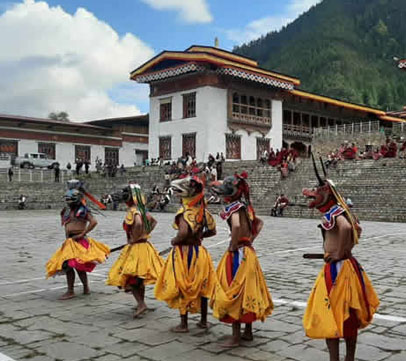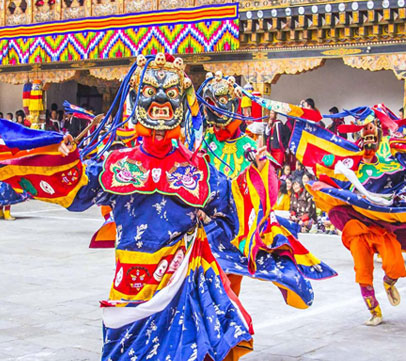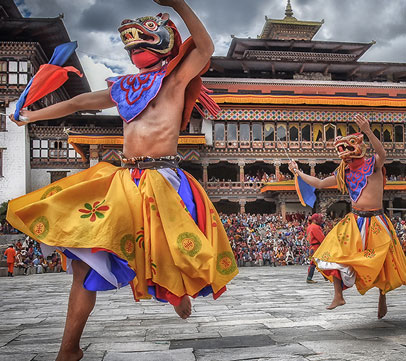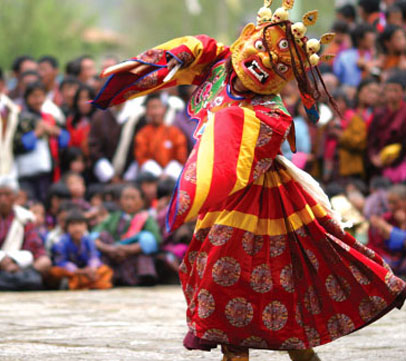Overview :
The Jhomolhari Mountain Festival is a unique blend of culture, nature, and adventure, held in the stunning highlands of Bhutan near Mount Jhomolhari (7,326m). This 8-day tour offers a rare opportunity to experience Bhutan’s vibrant traditions, breathtaking landscapes, and diverse wildlife while engaging with the local communities that live in harmony with nature.
Day 1: Arrival at Bagdogra – Transfer to Phuentsholing
- Arrive at Bagdogra Airport: You’ll touch down at Bagdogra Airport, your gateway to the eastern Himalayas.
- Transfer to Phuentsholing: The road journey from Bagdogra to Phuentsholing takes you through lush tea gardens and picturesque countryside, offering a glimpse of the natural beauty to come.
- Visit Zangto Pelri Lhakhang: This temple, nestled in Phuentsholing, is a peaceful sanctuary adorned with intricate Bhutanese artwork and offers a serene introduction to Bhutanese culture.
- Overnight in Phuentsholing: Accommodation options in Phuentsholing range from comfortable hotels to cozy guesthouses, providing a welcoming start to your Bhutanese
Day 2: Phuentsholing to Thimphu
- Complete immigration formalities: Crossing into Bhutan involves completing necessary immigration paperwork, which is typically handled efficiently.Drive to Thimphu through scenic landscapes: The journey traverses winding mountain roads and verdant valleys, with occasional stops to admire cascading waterfalls and panoramic vistas.
- Stop at Chuzom: Here, the confluence of the Thimphu and Paro rivers is marked by prayer flags fluttering in the breeze, offering a serene moment to appreciate Bhutan’s natural beauty.
- Explore Thimphu city: Bhutan’s capital blends tradition with modernity, where ancient D’zongs (fortresses) stand beside bustling markets and contemporary cafes, providing insight into Bhutan’s unique cultural fusion.
- Overnight in Thimphu: Accommodation in Thimphu ranges from boutique hotels to cozy lodges, ensuring a comfortable stay admits the capital’s charms.
Day 3: Thimphu Sightseeing
- Visit National Textile Museum: Discover Bhutan’s intricate weaving traditions and admire displays of colorful textiles, each telling a story of local craftsmanship and cultural heritage.
- See the Buddha Dordenma statue: Standing tall at 169 feet, this bronze statue of Buddha overlooks Thimphu Valley, offering panoramic views and a serene atmosphere for reflection.
- Explore the Memorial Chorten: Dedicated to world peace and honoring Bhutan’s third king, this stupa is a center for religious ceremonies and a place for locals to gather and
- Visit Thimphu’s weekend market: Immerse yourself in the vibrant sights and sounds of Bhutanese culture, as locals gather to sell fresh produce, handicrafts, and delicious street food.
- Witness traditional archery matches: An integral part of Bhutanese culture, archery tournaments offer a glimpse into the country’s sporting traditions and community
Rhododendron Festival is a vibrant annual celebration held in Bhutan to honor the blooming of the rhododendron flowers, which are abundant in the country’s temperate forests. The festival is typically held in the spring when these magnificent flowers are in full bloom, creating a breathtaking spectacle of colors. The event focuses on showcasing Bhutan’s rich natural beauty, cultural heritage, and environmental conservation efforts.
Key Features of Rhododendron Festival:
Celebration of Nature and Biodiversity:
- The Rhododendron Festival highlights Bhutan’s diverse flora, with the rhododendron being a key feature of the country’s natural landscape. Bhutan is home to over 40 species of rhododendrons, which bloom in a variety of colors, from white and pink to red and purple, making the landscape especially beautiful during the spring season.
Cultural Performances and Exhibitions:
- During the festival, local communities and cultural groups come together to present traditional Bhutanese dances, songs, and performances. These cultural displays offer a chance to experience Bhutanese music, dance, and folklore, enriching the experience for attendees.
- Local handicrafts, textiles, and other Bhutanese arts and crafts are also showcased, providing insight into the region’s craftsmanship and traditional skills.
Rhododendron Trails and Nature Walks:
- The festival often includes guided nature walks and rhododendron trails, where visitors can explore the blooming rhododendron forests in different parts of Bhutan. These trails offer spectacular views of the flowers, as well as the surrounding landscapes, including hills, valleys, and Himalayan peaks.
- Visitors can enjoy the serenity of nature, learn about Bhutan’s rich biodiversity, and engage in eco-tourism activities that promote environmental awareness.
Environmental Awareness and Conservation:
- The festival places a strong emphasis on environmental conservation, with a focus on preserving Bhutan’s rich natural heritage. It provides an opportunity to raise awareness about the importance of protecting forests, wildlife, and biodiversity.
- Bhutan, known for its commitment to conservation, uses the festival to encourage sustainable tourism practices and eco-friendly initiatives to preserve its pristine environment.
Local Cuisine and Traditional Delights:
- The festival is a celebration of Bhutanese food as well. Visitors can enjoy traditional Bhutanese cuisine, including dishes like emadatse (a spicy cheese dish), momo (dumplings), and various local beverages like butter tea and rice wine. Food stalls and local markets offer a taste of the region’s culinary specialties.
Community Involvement:
- The Rhododendron Festival is highly community-driven, with local villagers and farmers playing a central role in organizing and participating in the event. This gives visitors a chance to interact with the Bhutanese people, learn about their way of life, and experience their deep connection with nature.
When It Happens:
- The festival typically takes place in April or May, during the peak of the rhododendron blooming season. The exact dates may vary depending on the weather and blooming cycles in different regions of Bhutan.
Venue:
- The festival is primarily celebrated in regions with abundant rhododendron forests, such as Phobjikha Valley, Paro, and Punakha. These areas offer the ideal setting for the event, with stunning views of blooming rhododendrons against the backdrop of the Himalayan mountains.
Cultural and Spiritual Significance:
- The rhododendron flower holds spiritual significance in Bhutan, symbolizing purity and the transient nature of life. The festival is not only a celebration of nature’s beauty but also an opportunity to reflect on the deep spiritual and cultural ties that Bhutanese people have with their environment.
- Overnight in Thimphu: As the sun sets over Thimphu, unwind in your accommodation, reflecting on a day filled with cultural immersion and scenic wonders.
Day 4: Thimphu to Punakha
- Drive to Punakha via Dochu La Pass: At an altitude of 10,000 feet, Dochu La Pass offers breathtaking views of the eastern Himalayan peaks on clear days, with 108 chortens (stupas) adding to the spiritual ambiance.
- Visit Punakha Dzong: Set at the confluence of the Mo Chhu and Pho Chhu rivers, this ancient fortress-monastery is known for its intricate woodwork and beautiful setting, making it a highlight of Bhutanese architecture.
- Walk across Punakha Suspension Bridge: Spanning the Po Chhu River, this suspension bridge provides panoramic views of Punakha Valley and is a favorite spot for photography enthusiasts and nature lovers.
- Overnight in Punakha: Accommodation in Punakha offers tranquility amidst lush paddy fields and is often characterized by traditional Bhutanese architecture, providing a peaceful retreat after a day of exploration.
Day 5: Punakha to Paro
- Travel to Paro: Nestled in a picturesque valley, Paro is famous for its historical landmarks and scenic beauty, offering a serene ambiance that captivates
- Visit Chimi Lhakhang (Temple of Fertility): Dedicated to the eccentric “Divine Madman,” this temple is renowned for its fertility blessings and vibrant murals, reflecting Bhutan’s unique blend of spirituality and folklore.
- Explore Paro town: Wander through quaint streets lined with traditional Bhutanese houses, handicraft shops, and cozy cafes, providing an authentic glimpse into local
- See the National Museum (Ta Dzong): Housed in a former watchtower overlooking Paro Dzong, the museum showcases Bhutanese art, relics, and cultural artifacts, offering insights into the kingdom’s rich history.
- Visit Paro Dzong: Also known as Rinpung Dzong, this fortress-monastery is an architectural marvel and serves as an administrative center and religious site, with stunning frescoes and intricate woodwork.
- Overnight in Paro: Accommodation in Paro ranges from luxury resorts to charming guesthouses, each offering warm Bhutanese hospitality amidst tranquil
Day 6: Paro Sightseeing
- Hike to Taktsang Monastery (Tiger’s Nest): Perched on a cliffside at 10,000 feet, Taktsang Monastery is a revered pilgrimage site and a marvel of Bhutanese architecture, offering panoramic views and a spiritual journey.
Alternative: Visit Haa Valley and Chele La Pass
- Explore Haa Valley: Journey to the tranquil Haa Valley, known for its pristine natural beauty, traditional Bhutanese architecture, and rich cultural heritage. Visit local temples and monasteries, and interact with friendly villagers to experience rural Bhutanese life.
- Chele La Pass: Located at an altitude of 3,988 meters (13,084 feet), Chele La Pass offers stunning panoramic views of the Himalayan mountain range and the valleys below.
Take in the breathtaking scenery and enjoy moments of serenity amidst the high mountain landscapes.
- Overnight in Paro: Return to Paro in the evening, where you can relax and reflect on the day’s adventures amidst the peaceful surroundings of this picturesque valley.
Day 7: Paro to Phuentsholing
- Drive back to Phuentsholing: Retrace your journey through Bhutan’s picturesque landscapes, reflecting on the memories created during your exploration of this enchanting kingdom.
- Evening exploration of Phuentsholing market: Browse local markets for unique souvenirs, handicrafts, and mementos, offering a last opportunity to immerse yourself in Bhutanese culture.
- Overnight in Phuentsholing: Accommodation in Phuentsholing offers comfort and convenience, providing a peaceful setting to conclude your Bhutanese adventure.
Day 8: Departure from Phuentsholing to Bagdogra
- Transfer to Bagdogra Airport for departure: Bid farewell to Bhutan as you embark on your journey back to Bagdogra Airport, carrying cherished memories and experiences from the Land of the Thunder Dragon.
Additional Activities that can be Added:
- River Rafting
- Mountain Biking
- Archery
- Cycling
- Cultural Tours with Adventure Elements
- White Water Rafting
- Chimi Lhakhang Hike
- Camping and Trekking
- River Kayaking


